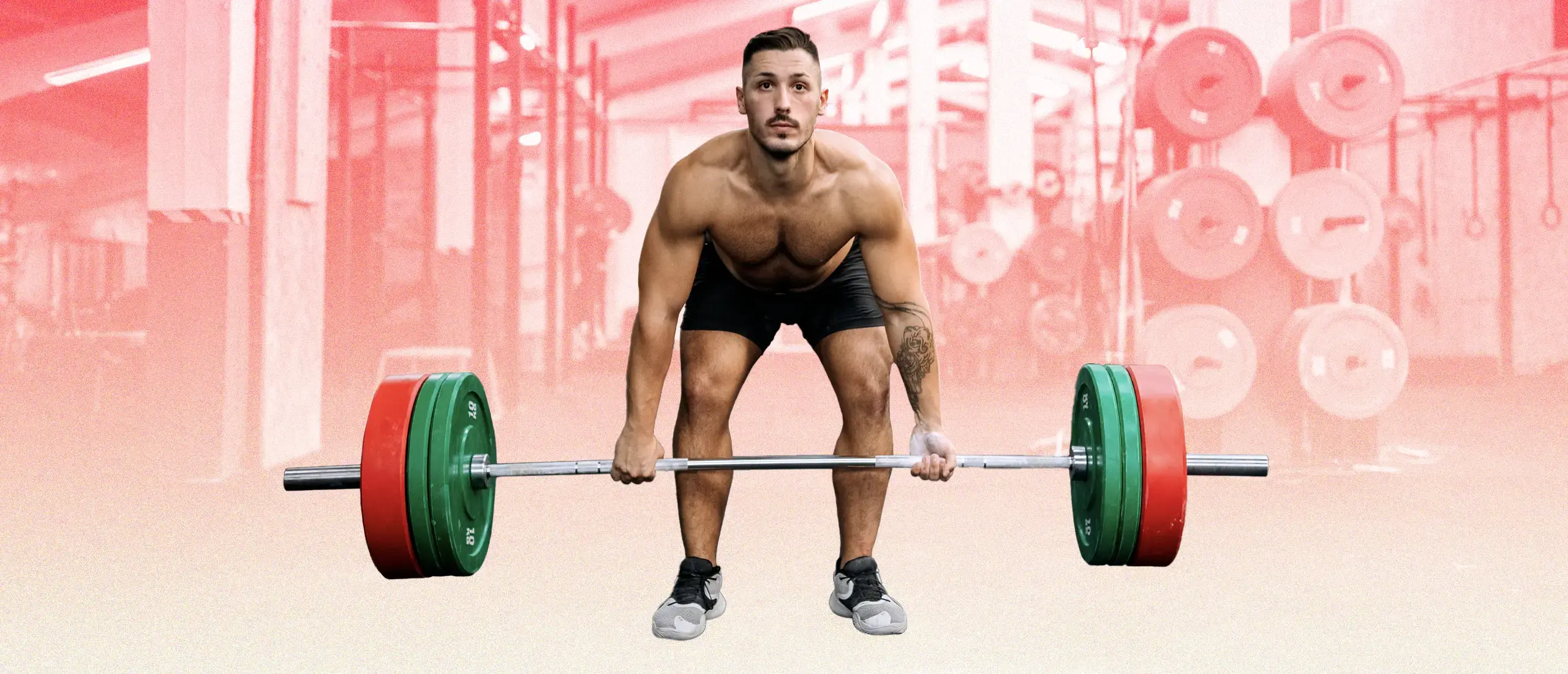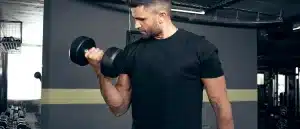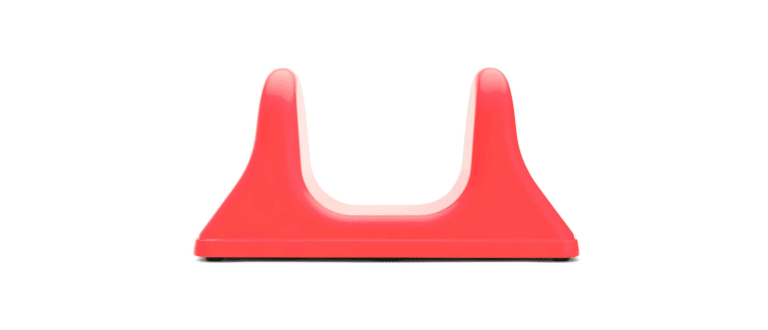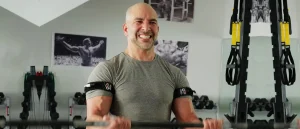Powerlifting vs. Weightlifting—What’s the Difference?
- By Will Price
- Reviewed by Sydney Bueckert, NASM CPT, CES, FNS, GPT
- November 28, 2023
Fast Facts
- Powerlifting and weightlifting are both strength sports that are performed with barbell exercises.
- Powerlifters are measured on their ability to execute their heaviest bench press, back squat, and deadlift.
- Weightlifters are measured on their ability to execute their heaviest snatch and clean & jerk.
- Powerlifting pushes competitors toward maximal overall strength, while weightlifting favors explosive power and speed.
Some people view hitting the weight room as a chore. Others, well, let’s just say they enjoy it a little more. Then there are those who enjoy it so much they make a sport out of it. There are many forms of strength competition, but the two that involve weight lifting are powerlifting and weightlifting—AKA olympic lifting. Despite using the same simple tools—barbells, plates, and perhaps a healthy dose of pre-workout—there are stark differences between the two sports.
Whether you’re interested in competing or simply seeing how you measure up, here’s what you need to know about powerlifting and weightlifting.
Our Experience
Hone Health is a team of health-obsessed journalists, editors, fitness junkies, medical reviewers, and product testers. I’ve personally spent years of my life in gyms—powerlifting gyms, Olympic weightlifting gyms, 24-Hour Fitness centers, and everything in between. I’ve dabbled in and sifted through current research and popular media for both sports.
Powerlifting vs. Weightlifting: Is There a Difference?
Most people asking about the difference between powerlifting and weightlifting are referring to the sport of powerlifting versus the sport of Olympic weightlifting. Though the sports are fundamentally similar—competitors must lift more weight than their competitors to win—the specifics are significantly different.
The most basic differences lie in the lifts required for each sport. Powerlifters are judged on the weight they can lift on the three classic lifts—bench press, back squat, and deadlift. Weightlifters have just two movements—the clean & jerk and the snatch—to compete in, both of which are fairly uncommon for newer lifters.
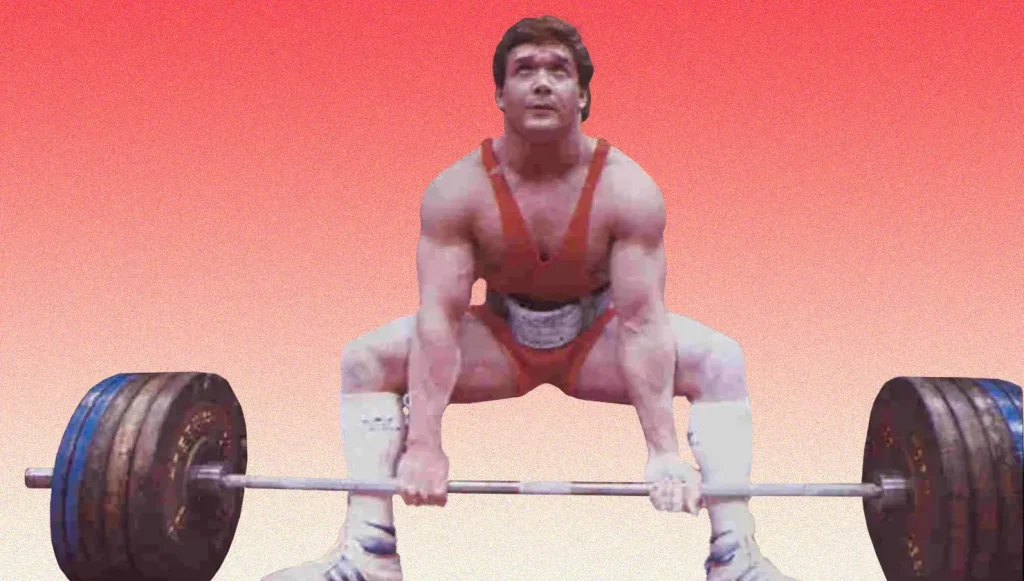
What Is Powerlifting?
Powerlifting is a strength sport in which athletes must lift as much as possible for a single rep across three exercises: the barbell bench press, back squat, and deadlift—AKA the big three compound lifts.
Lifters have three attempts to complete their lift, and are scored on their total weight lifted across their three heaviest completed lifts. Competitors are broken into weight classes, each of which award the strongest lifter within their class. Meets also award the strongest lifter across all weight classes using total weight lifted figures multiplied by a coefficient to normalize strength across the weight range.
The Lifts
Bench press
The bench press is a classic lift for a reason: it builds muscle, drives strength growth, and it’s fun as hell. Performing it is simple—lift a weighted barbell off the rack, lower it to your chest, and push it back where it came from.
Perfecting the move is more difficult: Powerlifters use a variety of techniques and form adjustments—arched back, wide grip, butt lifted off the bench—to maximize the weight they can move.
Back squat
The mother of all leg workouts is perhaps the simplest of all leg workouts: squat with the barbell on your back and stand back up. The movement requires immense leg strength and, as your squat working weight increases, tremendous core stability.
Unlike the bench press, a powerlifter’s squat form is often not significantly different from standard, good squat form you’d see at any gym. They’re more often masters of the basics, instead: proper core bracing, even breathing patterns, and excellent ankle and hip mobility (as well as immense driving leg strength).
Though rules are different across different competition organizations, most squatting rules ask the competitor to squat deep enough such that the crease of their hip drops below their knee cap for the squat to count.
Deadlift
The closest thing to a full-body compound lift in the weightlifting world, the deadlift is also the nearest workout to a test of pure strength (and willpower) there is. There are no rules on depth, speed, or style of deadlifts that guide lifters—one must simply lift the loaded bar off the ground and stand up with it in their hands. The lift recruits muscles from the upper body, back, quads, hamstrings, glutes, and core to work in unison.
Powerlifters may employ different stances (conventional, sumo) and grips (hook, mixed, overhand) to get the weight off the ground.

What Is Weightlifting?
Weightlifting is a strength sport in which athletes must lift as much as possible for a single repetition in either the clean & jerk or the snatch.
Unlike powerlifting, weightlifting is also a recognized Olympic sport, which is why the snatch and clean & jerk are often called Olympic lifts. Like powerlifting, competitors are scored by the weight totals and within their weight classes first, and also awarded based on highest totals in the individual lifts.
Weightlifting movements generally require more explosive force and form than their powerlifting counterparts, which is evident if you’ve ever seen a person fling hundreds of pounds over their head and hold it there for several seconds.
The Lifts
Snatch
Weightlifting is often described as more athletic, more explosive powerlifting. The snatch typifies this. The lifter must throw a loaded barbell from the floor to above their head, while simultaneously completing a squat. If you’ve never seen it done or struggle to visualize it, look no further than the Michael Jordan of weightlifting, Lasha Talakhadze, whose snatch record of 225kg, or 496 pounds, is the current world record figure for the lift.
The snatch movement recruits your quads, glutes, hamstrings, core, adductors, traps, shoulders, lower back, calves, and virtually every other muscle in the body in some capacity (either for force production or stability).
Clean & Jerk
The clean & jerk begins with the barbell on the floor and requires the lifter to vault it up and rest it on their shoulders, like the starting position of a front squat—this movement is the “clean.” The second phase—or the “jerk”—asks the lifter to push the barbell to full extension above their head.
There are a number of methods to perform the jerk—split jerk, power jerk, squat jerk, etc.—but every method points toward the same end goal of getting the barbell from the resting position on their shoulders to above their heads. Again, Lasha Talakhadze showcases how to clean & jerk with perfect form, under truly obscene amounts of weight. And yes, Lasaha owns the world record for the clean & jerk as well.
Similarities Between Weightlifting and Powerlifting
Increased lifespan
It’s accepted science that lifting weight can better your chances at living a longer, healthier life. As we age, we lose lean muscle mass, strength, and power (1). Lifting weights allows us to add muscle mass, increase strength, and retain explosive power well into our later years (2). Weight training under heavier loads can also trigger the body to densify bones (3), reducing the risk of developing age-related conditions like osteoporosis.
If you want to get nitpicky, though, there is some research that suggests muscular power training is superior to muscle strength as we age, at least as it concerns muscular performance at advanced ages (4). Power-focused training—or training that prioritizes applying force with speed—is generally associated with weightlifting rather than powerlifting (confusing as that sounds).
Low injury rate
Another potentially surprising similarity: powerlifting and weightlifting are no more likely to cause injury than other strength-supported non-contact sports, but are less likely to result in injury when compared to contact sports (5). Considering the order of the day in both sports—lifting enormously heavy stuff in precarious positions—this fact is often surprising to newcomers.
Training style
Though any seasoned powerlifter or Olympic-style lifter would be quick to point out the differences in training styles, the reality is the two sports have more in common than not when it comes to training. Both typically err toward training regimens with lower repetition counts and higher weights, lengthier rest periods between sets, and more focus on performed lifts rather than accessory exercises (especially as lifters approach a competition or meet). Both also put a huge emphasis on grip strength as well.
Do not necessarily develop aesthetic physiques
While there are some Olympic lifters and powerlifters that have traditionally excellent physiques, it’s not all that common. Prioritizing strength or power development over hypertrophy, or pure muscle building, results in a different aesthetic.
Powerlifters and weightlifters are incredibly muscular, but aren’t interested in isolating the showier muscles so much as they are maximizing their strength potential. The exception is often the lower- and middle-weight class divisions, where lifters may be incredibly strong but need to stay leaner to make weight.
Differences Between Weightlifting and Powerlifting
Power vs. strength
Power is a combination of speed and force production (often described as “explosiveness”). Strength is raw force production. Weightlifting is concerned with power, powerlifting with strength—yes, that is confusing.
It doesn’t matter how quickly a powerlifter is able to pull a deadlift, or get out of the depths of hell on a squat, so long as they do it within the rules of the competition. And while technically it doesn’t matter how quickly Olympic lifts are performed, they are virtually impossible to perform in any manner that doesn’t involve quick, violent movement.
Sometimes powerlifting is described as a mixture of strength and willpower, while weightlifting blends strength with technique or athleticism, but ultimately simplifying either into neat categories is difficult. If you don’t think it requires willpower to jerk hundreds of pounds over your head, you’re foolish; similarly, if you don’t think it requires tremendous technique to lift 1,000 pounds from the earth, you’re similarly foolish.
Organization
All international weightlifting competitions are organized by the International Weightlifting Federation (IWF). The IWF sets the rules and generally standardizes all high-level weightlifting competitions (most regional or national organizations simply follow the same ruleset for this reason). Alternatively, powerlifting is largely decentralized in comparison. There are numerous organizations at the national, regional, and subregional levels, which means rules differ somewhat throughout the sport.
Learning curve
It’s mostly accepted that powerlifting is “easier” to get into than Olympic weightlifting. This is largely because the big three powerlifting movements—bench, squat, deadlift—also happen to be the big three compound movements recommended to most new gym goers. If you do those lifts at the gym in your routine, you’re already practicing “powerlifting.”
Weightlifting movements—the snatch and clean & jerk—are quite uncommon to see performed at a commercial gym. They’re not often recommended to beginners due to their technical complexity because, if you’re going to be playing around with heavy weights, it’s at least somewhat safer to do so within easy-to-grasp movements you can build safety into—most squat racks and benches have safety features to help you bail out of a bad lift.
The Bottom Line
Powerlifting and weightlifting are both strength sports with a great deal of shared DNA, but powerlifting is generally considered more of a raw strength sport while weightlifting focuses on power (force and speed) production.
References
1. Volpi, Elena et al (2004). Muscle tissue changes with aging. https://www.ncbi.nlm.nih.gov/pmc/articles/PMC2804956/
2. Coleman, Carver J (2022). Dose–response association of aerobic and muscle-strengthening physical activity with mortality: a national cohort study of 416,420 US adults. https://bjsm.bmj.com/content/56/21/1218
3. Hong, A Ram et al (2018). Effects of Resistance Exercise on Bone Health. https://www.ncbi.nlm.nih.gov/pmc/articles/PMC6279907/
4. Hadouchi, Mohamed L. et al (2022). Effectiveness of power training compared to strength training in older adults: a systematic review and meta-analysis. https://www.ncbi.nlm.nih.gov/pmc/articles/PMC9367108/
5. Aasa, Ulrika et al (2016). Injuries among weightlifters and powerlifters: a systematic review. https://bjsm.bmj.com/content/51/4/211



